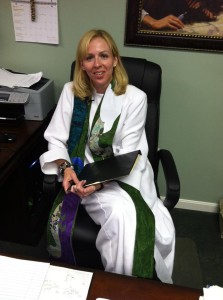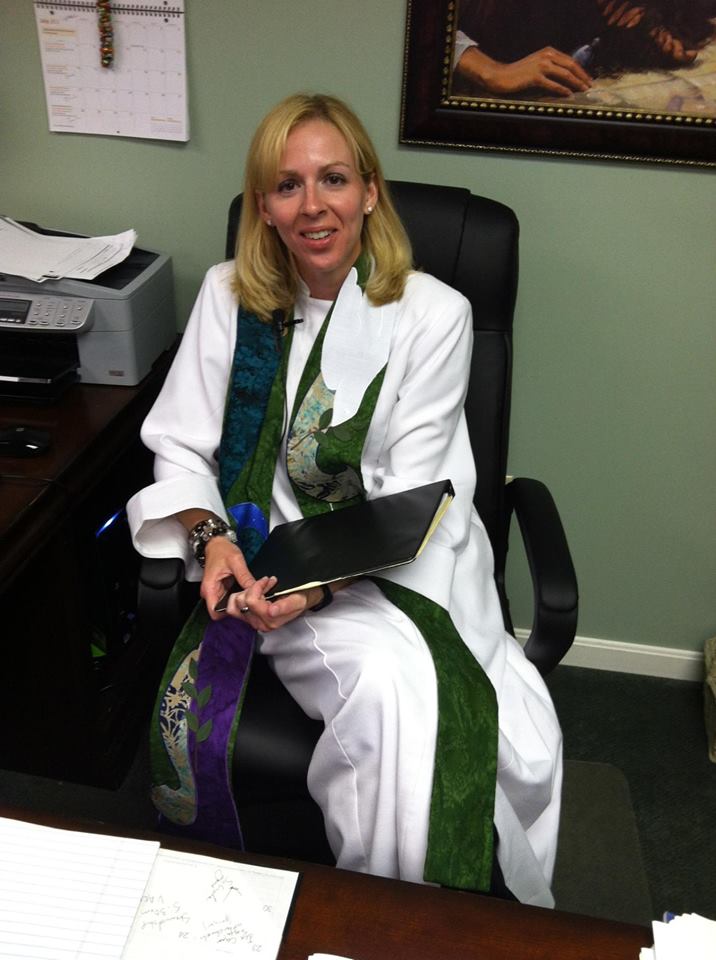Harleys at the Communion Table – II – by Darcy Metcalfe Mudd
 In my last essay, I discussed briefly how ideas of sacred ritual have noticeably shifted in the North American Protestant landscape; particularly around our death and funeral rituals. We seem to have become much more sanitized and distanced from the deaths of our loved ones, as the funeral services seem to be commonly becoming more reflective of customized memorial services that neglect focused worship on God and the sacredness of community ritual. And as I continue to wrestle with the question, “What is happening in our culture to sacred ritual?,” I am beginning to wonder if I am asking the wrong question. Possibly the correct question is, instead, “What is it that we now hold most sacred?” Because I am inclined to think these shifts in sacred ritual are reflecting something worth noting about us as a culture.
In my last essay, I discussed briefly how ideas of sacred ritual have noticeably shifted in the North American Protestant landscape; particularly around our death and funeral rituals. We seem to have become much more sanitized and distanced from the deaths of our loved ones, as the funeral services seem to be commonly becoming more reflective of customized memorial services that neglect focused worship on God and the sacredness of community ritual. And as I continue to wrestle with the question, “What is happening in our culture to sacred ritual?,” I am beginning to wonder if I am asking the wrong question. Possibly the correct question is, instead, “What is it that we now hold most sacred?” Because I am inclined to think these shifts in sacred ritual are reflecting something worth noting about us as a culture.
I once heard that you can tell what a society holds most sacred by observing which buildings reach closest to the heavens in its skyline. And I am aware that this is in no way a conclusive proof, but it is still interesting to reflect upon. From the Middle Ages to the advent of the skyscraper, churches were most often the tallest buildings in a city or community’s skyline. The Lincoln Cathedral in London, Barcelona‘s Sagrada Família, and Germany’s Ulm Minster were all once the tallest buildings in the world. And this is not to say something benevolent and holy about the Church itself was something that society primarily held sacred. I would contend that it was more likely that the Church was held sacred by those who had the most social and political power to weld, as the Church once was the means by which those in power extended their influence. But, however one perceives Church history, it still remains that things have changed. Now the tallest buildings in our skylines are financial institutions and big business buildings found at the heart of the financial districts of our major cities. The Shanghai Tower, the Burj Khalifa, One World Trade Center, and the CTF Finance Centre are now the world’s tallest buildings, all places thriving on the apparatus of capitalism, consumerism, and finance. And if the skyline adage has any merit, this would mean that now consumerism and capitalism are presently things our society holds most sacred. If this is true, it would be helpful to examine the possible cultural sacred rituals we have shaped around what we now hold most sacred.
Black Friday could easily be considered a sacred ritual for millions of people. Black Friday is a notable example of our passion for individualized consumerism. It is a ritual that immediately gives us what we want, the way we want it, for a bargain-basement price and minimal investment. Black Friday reflects how much we are truly in love with personalized consumerism. The Super Bowl and professional sports are other examples of cultural sacred ritual. The ritual of the Super Bowl gives us a sense of community that we long for while feeding our individualized desire to be entertained in a customizable way. Varieties of entertainment and technology are cultural sacred rituals. What are the rituals we have developed around the personalized screens in our lives? And all of these examples demonstrate at some level of our fondness for instant gratification and having things our own way in our own time.
So maybe my initial question, “What has happened in our culture to sacred ritual?” is not the correct question to ask at all. Maybe the more accurate question would be, “What is it that we now hold sacred?” Because whatever we hold sacred, it seems from that place our cultural rituals will arise and take form. It is possible that our sacred ritual is not at all slipping away, but it is simply being hijacked by consumer culture like everything else. Our cultural love affair with personalized consumerism, which is so ingrained in us, appears to actually be changing the form of our sacred ritual. And it seems that an undeniable tension exists and is growing between individualized/subjective ritual shaped by our love affair with consumerism, and community-based/objective ritual shaped by a belief that there is something deeper at stake than our own selves and immediate desires.
And if it is true that what we as a society hold sacred has shifted in such a way, this has some staggering implications; particularly with how we perceive the world around us and the sacredness of humanity. Thomas Long touches upon what this implies when he writes, “I am persuaded that in this, our moment in history, we are going through one of those periodic upheavals in the ways we care (or don’t) for the dead that are inevitable signs of an upheaval in the ways we care (or don’t) for the living. To put it bluntly, a society that has forgotten how to honor the bodies of those who have departed is more inclined to neglect, even torture, the bodies of those still living.”[1] I believe that some of the transformations and shifts we are witnessing in our sacred rituals is telling of something going on at a much deeper level within our society and culture.
Rev. Darcy Metcalfe Mudd is currently serving as Solo Pastor at First Presbyterian Church in Perrysburg, Ohio. Darcy’s passions include advocacy for women and children, as well as developing safe sanctuary/youth protection policies and resources. Darcy also currently serves on the Advocacy Committee for Women’s Concerns for the PC(USA).
[1] Thomas G. Long, Accompany Them with Singing: The Christian Funeral (Louisville: Westminster John Knox Press, 2009), p. 7.

